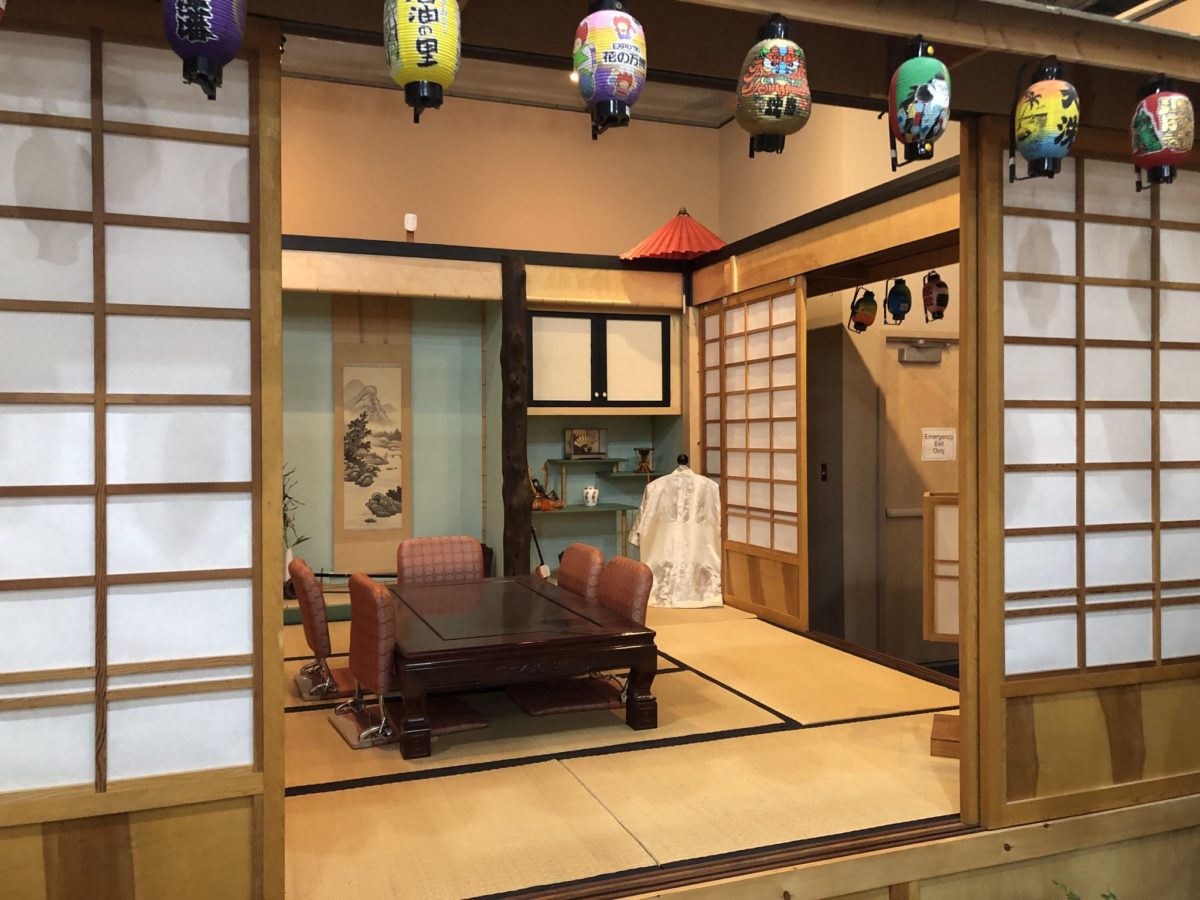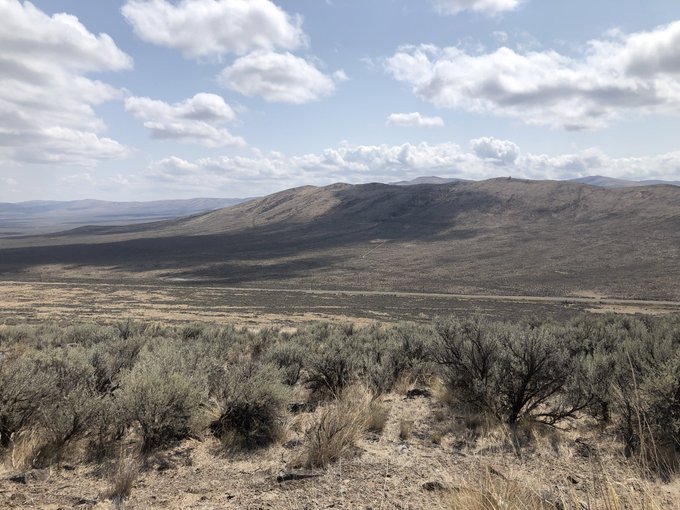December 20, 2022
To the Whitman Mission.
Starting with this Indian raid on a wagon train in 1854, west of present-day Boise, the Oregon Trail across Idaho became dangerous without military escort. While most of the settlers were just passing through, the Native tribes resented their depletion of local firewood and game.

Horse grazing in a field near Caldwell, Idaho, west of Boise.

The original Fort Boise (replicated here) was a fur trading post of the British-owned Hudson Bay Company, established along the Snake River about 80 miles west of present-day Boise.

This part of Idaho, around Parma, touts itself as the “Onion Capital”.

On the Oregon Trail, approaching the original site of Fort Boise, along the Snake River.

Looking across the Snake River from the original site of Fort Boise. The opposite bank is Oregon.

Crossing the Snake River into Oregon. But the journey to Oregon City and the Willamette Valley, the emigrants’ destination, is far from over yet!

The Four Rivers Cultural Center in Ontario, Oregon has wonderful displays on the different groups of people – Native Americans, Basque sheepherders, Mexican farm workers, and Japanese who settled here after being interned in WW2 – living in eastern Oregon.




Japanese garden at the Four Rivers Cultural Center in Ontario, in eastern Oregon.



Following the Trail across the barren hills of eastern Oregon, out of Ontario.

The Oregon Trail migrants encountered the Snake River one last time at Farewell Bend.

At this point, the Snake River enters the impassible Hell’s Canyon to the north, and the migrants were forced to leave it and cross the Blue Mountains to the northwest, to reach the Columbia.

Oregon Trail Restaurant in Baker City, Oregon.

Right next to the Oregon Trail Motel (Baker City, Oregon).

This store in Oregon’s Baker City looks like a good place to stock up for the Trail.

They even offer a packing list …

… and some helpful trail recipes.

As well as a map (we’re currently in the green part – “you are here”).

Perhaps I can ever borrow some oxen (if I can get that one off the roof).

Just outside of Baker City is the cemetery for Chinese immigrants who came in the 1800s to work on the railroads and gold mining.

The bones of many of those once buried in the Chinese cemetery outside Baker City, Oregon were recovered and sent back to China.

The original wagon ruts of the Oregon Trail, outside Baker City in eastern Oregon.

The Oregon Trail Interpretive Center outside Baker City was closed due to brushfire hazard. But members of the Nez Perce tribe gave a wonderful presentation outside, demonstrating their traditional dress, singing, and dancing.

This woman, who started a tourism business to promote the Nez Perce, said her beaded bag was over 100 years old, given to her by tribal elders. Her father sang a haunting “healing song”, and her sister talked about what earning a masters degree in science mean to her tribe.

Wagons circled around the campfire, at the Oregon Trail Interpretive Center outside Baker City, in eastern Oregon.

The view towards Baker City.

The landscape along the Oregon Trail outside Baker City, in eastern Oregon.

Heading through La Grande, towards Oregon’s Blue Mountains.

Where the Oregon Trail enters the Blue Mountains, at La Grande in eastern Oregon.

Crossing Oregon’s Blue Mountains was the the first time the emigrants had seen a heavily forested area since leaving Missouri.

The route across the Blue Mountains was showed by local Indians to the Astor Overland Party in the winter of 1812, after they nearly starved and froze to death futilely trying to follow the Snake River.

Marker at Emigrant Springs, a popular campsite on the Oregon Trail near the end of the crossing of the Blue Mountains. Dedicated by President Warren G. Harding!

A glimpse past the trees to the plains beyond, along the original wagon ruts of the Oregon Trail, near the end of the Blue Mountains crossing.

Off the main highway, the original path of the Oregon Trail, in the Blue Mountains of Oregon.

Once free of the trees, the main highway descends from the Blue Mountains through a ravine. We’ve chosen instead to follow the original Oregon Trail along the shoulder of that ravine.

With no bulldozers to cut their way straight through rock, the original Oregon Trail meanders its way down from the Blue Mountains in wide, gentle loops.

Sometimes the edge of the Trail seems a bit … precipitous.

On descending from the Blue Mountains, before reaching Pendleton, we paid a visit to the Tamastslikt Cultural Center, right next to the casino on the Umatilla Indian Reservation, belonging to a confederation of the Cayuse, Umatilla, and Walla Walla tribes.

The Cayuse were a small tribe (not more than 1000 people), but they were among the first to adopt the use of the horse – which is why horses sometimes were called “cayuses” in the American West.

The Cayuse punched above their weight. Their neighbors – including their close relatives the Nez Perce – viewed them as proud, prickly, and quarrelsome. We’ll see the consequences of this in a short bit.

An interesting way of depicting donors to the Tamastslikt Cultural Center, in eastern Oregon.

Woven cloth for sale at the Tamastslikt gift shop.

Wheat fields on the way to Walla Walla, Washington.

Crossing into Washington State.

The reason we’ve dipped into Washington State is to visit the site of the Whitman Mission, which played a very important role in the early history of the Oregon Trail.

I’ve mentioned Marcus (a medical doctor) and his wife Narcissa Whitman before. Determined to set up a Christian mission to the Indians in the Pacific Northwest, they were the first family to travel the Oregon Trail and demonstrate it could be done.

Upon arriving in Oregon in 1836, the Whitmans were warned by the Hudson Bay fur traders: preach to other tribes if you wish, but don’t try to settle among the prickly Cayuse. “They kill their failed medicine men.” The Whitmans ignored this advice.

At first all went amazingly well. The Cayuse welcomed the Whitmans and became friends, playing with their little daughter Alice Clarissa. Marcus planted this orchard of apples trees near the house.

Whitman constructed a pond, with a grist mill at the outlet. He cultivated a prospering farm. And he treated the Indians of their maladies – including the new infectious diseases introduced by the arrival of Europeans, which were decimating the surrounding tribes.

Narcissa’s diary was published, encouraging other American families to head out on the Oregon Trail. And when they arrived, the Whitmans welcomed them at their mission, providing them with supplies and guidance.

Paradise began to sour. Their 2-year-old little daughter, Alice Clarissa, wandered to the small river near their home, which once ran right here, and drowned. Narcissa became withdrawn, not wanting to interact with the Indians or welcome them into her home.

The Cayuse began to resent the Whitmans. They had built a prosperous farm on their land, without paying any rent. They seemed more interested in welcoming white settlers than ministering to their Indian neighbors.

Worst of all, when Dr. Whitman gave medicine to white settlers, they tended (because of natural immunities) to get better, while his Indian patients died in droves. The Cayuse began to suspect the couple of poisoning them.

“The Cayuse kill their failed medicine men.” And in November 1847, that is precisely what they did. A group of them entered the mission, killed Marcus, Narcissa, and several other men, and took several dozen women and children being treated at the mission hostage.

Eleven were killed, and several more died in capacity, mainly due to the smallpox that brought them to the mission for treatment in the first place. The bodies were buried in this mass grave on the mission grounds.

The Hudson Bay Company paid a ransom and the hostages were released. But American settlers jn Oregon were outraged. The Cayuse were hunted down, and five members of the tribe surrendered, accepting responsibility for the attack. They were tried and hanged in Oregon City.

These events had a major lasting impact. Settlers’ request for federal soldiers to subjugate the Cayuse prompted President Polk to finally negotiate a “solution” with Britain over the disputed Pacific Northwest, and to establish a territorial government for Oregon in 1848.

Whitman College in nearby Walla Walla, Washington, named after Marcus and Narcissa Whitman.

Last Chance Road. Near the Whitman Mission outside Walla Walla, Washington.

The journey continues here, in Part 11: Busted Wheels.
[…] The journey continues here in Part 10: To the Whitman Mission. […]